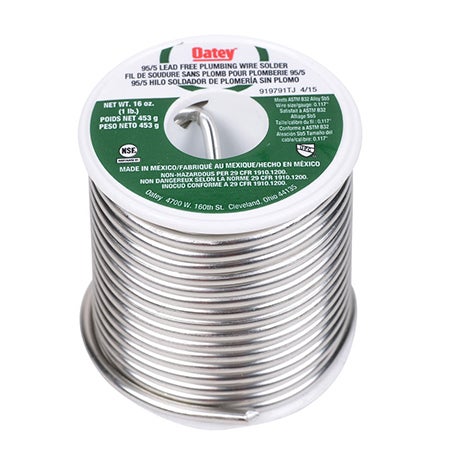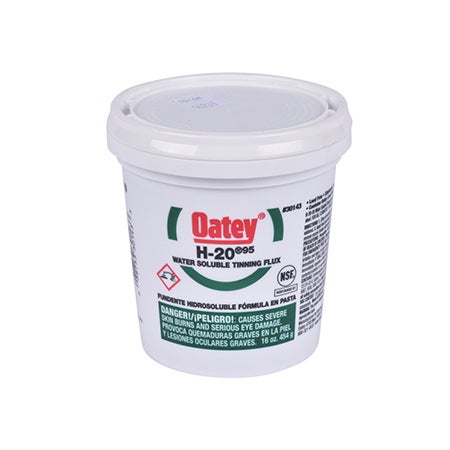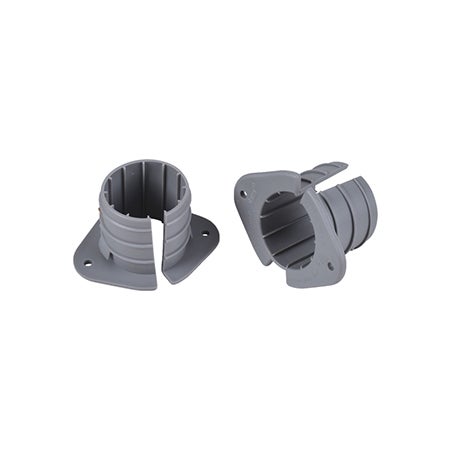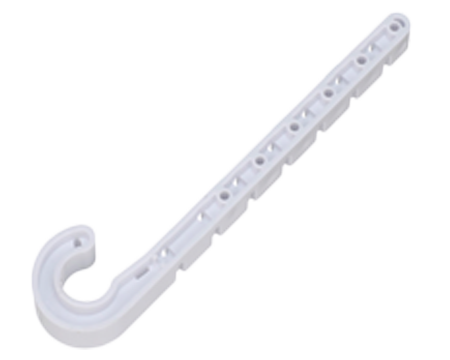Applications, Pros and Cons, and Essential Installation Products
Copper pipes, long a staple in plumbing systems, are well-known for their durability and versatility. With a history dating back centuries, copper plumbing pipes have proven to be reliable for transporting water and other fluids. Their corrosion-resistant properties make them ideal for both residential and commercial applications, ensuring longevity and minimal maintenance.
For plumbing, HVAC (Heating, Ventilation, and Air Conditioning), or even refrigeration systems, copper pipes remain a top choice for industry professionals. In this blog, we will explore copper plumbing pipes' various advantages and uses, shedding light on why they remain a popular option today and what essential products are needed to work with copper-pipe installations.
Applications Using Copper Pipes
Copper pipes are widely used for water supply and distribution systems. Their excellent corrosion resistance ensures the water remains clean and safe for consumption. Copper pipes are highly compatible with hot and cold water, but caution should be taken as they are unsuitable for certain chemicals.
Another prominent application of copper is in HVAC systems for refrigerant lines in air conditioning equipment and heat pumps. The durability and the ability to handle high pressure and temperature variations make copper piping ideal for maintaining reliable cooling and heating performance.
Copper pipes are also considered a safe and reliable choice for natural gas supply lines due to their superior resistance to fire and extreme temperatures.
The Pros and Cons of Using Copper Plumbing Pipes
- Easy to install: The superior malleability of copper piping allows for faster installation, even in complex systems, as they can be readily bent and shaped. Their flexibility and lightweight nature contribute to this installation speed, which can be further expedited with pro press fittings that eliminate the need for soldering.
- Visually appealing: The straight lines and clean finish of copper pipes make them an ideal choice for exposed installations. In contrast, plastic pipes that are shipped in coils may appear less organized and require frequent strapping for support.
- Cost: Copper pipes are typically more expensive than alternative plastic materials such as PEX (crosslinked polyethylene).
- Environmentally friendly: Copper is 100% recyclable and does not leach toxins into the environment during manufacture or use, making it an ideal choice for an eco-friendly alternative. Additionally, copper has antibacterial properties, naturally keeping your plumbing system clean and free from bacteria buildup.
Also, copper pipes come in rolls, allowing easy storage and transportation. Finally, copper pipes do not impart a metallic flavor to the water, ensuring a clean and pleasant taste.
Essential Products for Copper Plumbing Pipe Installation
When working with copper pipes, you will need several products for installation, securing, and assembling the joints. Here are some of the essential products:
- Solder: Solder is a metal or metallic alloy that has historically consisted of lead (lead-based solder) and tin in various proportions. Soldering is a critical step in the copper installation process. Learn more about how to solder copper pipes here.
- Oatey® 95/5 Lead-Free Plumbing Wire Solder is a tin-antimony formula designed for use in plumbing applications where frequent and extreme temperature changes and vibrations occur. This product is NSF-listed for potable water applications, including refrigeration lines and cooling equipment.

- Tinning flux: Flux provides superior wetting properties for better solder flow. It also prevents oxidation by filling the joint and blocking air from entering during wetting. Unlike other flux formulas on the market, tinning flux contains ground-up solder flakes, known as tinning powder, that clean tin and flux most commonly soldered metals, including copper, brass, zinc, galvanized iron lead, and tin or copper-coated metals. Learn how to solder low-lead brass expertly using tinning flux here.
- Water-soluble tinning flux is commonly used in soldering copper pipes. Formulated to clean and prepare the copper surfaces before soldering, It ensures a strong and durable joint. Oatey® H-20® 95 Water Soluble Tinning Flux is a water-flushable flux containing solder powder to aid the soldering process. The smooth, non-runny paste easily washes residual flux from a piping system.

- Pipe supports: Whether securing or supporting a plumbing pipeline below the wall, ceiling, or floor, pipe supports such as hangers, clamps, brackets, and hooks are essential to complete your copper pipe installations correctly.
- Pipe clamps allow for a quick and easy installation of copper tubing. For example, Oatey® Insulating Pipe Clamps allow copper pipes to be secured through studs. Constructed of durable, corrosion-resistant polypropylene, these suspension pipe clamps feature a ribbed design that allows the pipe to cool faster and expand or contract freely. These clamps also isolate the pipe from the stud, helping reduce noise. By securely fastening the lines in place, pipe clamps help to minimize stress and strain on the joints, reducing the risk of leaks or damage.

-
- Pipe hangers can secure supply lines and DWV (drain, waste and vent) pipes. Oatey® Copper-Plated Milford Hangers are designed to hang a copper pipe from an object; with a top set plate, the hanger swivels and locks into place. Additionally, these hangers have pre-drilled holes for fast screw installation.

-
- J-Hooks provide a fast, easy, and economical way to secure piping. Oatey® CTS J-Hooks, made of high-impact ABS, secure supply-line piping from joists and rafters, with 50 pounds as a safe working load. For use with copper, PEX, CPVC, and other CTS-sized piping, these J-Hooks permit system expansion and contraction while allowing nails to sit flush against a wall or stud.

-
- Copper and Steel Pipe Hooks support piping under wooden joists, rafters, or trusses. They are self-nailing for copper, PVC, CPVC, galvanized, or PEX tubing.
These products are essential for working with copper piping, ensuring proper installation, secure connections, and the ability to test and verify the system's integrity.

Copper Plumbing Pipe Maintenance Tips
Proper maintenance is essential for ensuring the longevity and functionality of copper piping. Visual inspection is crucial in identifying potential issues. Regularly checking areas such as basements or exposed sections of the plumbing system allows homeowners to spot any visible signs of water dripping, which could indicate a leak. Repairs can be made promptly and less expensively by catching these problems early, preventing further damage.
Green deposits on copper pipes, known as verdigris, signify improper soldering. This residue occurs when flux, used during the soldering process, is not properly wiped off. The flux residue acts as an acid that slowly eats away at the pipe, leading to corrosion and leaks. Visual inspection can help identify areas with excessive verdigris, similar to the green patina on the Statue of Liberty. Wiping off this residue with a rag using an acidic solution such as vinegar, lemon juice, or salt can minimize the potential for future leaks and corrosion. Alternatively, warm water and dish soap can also work.
When joining copper pipes or fittings, it is important to ensure cleanliness. This includes using a sand cloth or fitting brushes to clean the surfaces before soldering. Any dirt or debris left inside the joint can cause issues during the soldering process and compromise the integrity of the connection. Thoroughly cleaning the surfaces before joining will help ensure a secure and leak-free connection.
Regular visual inspections and proactive maintenance are key to maintaining copper pipes. Checking for signs of leaks, addressing them promptly, removing any verdigris residue, and ensuring clean joints when joining pipes can help prevent future problems and extend the plumbing system’s lifespan.